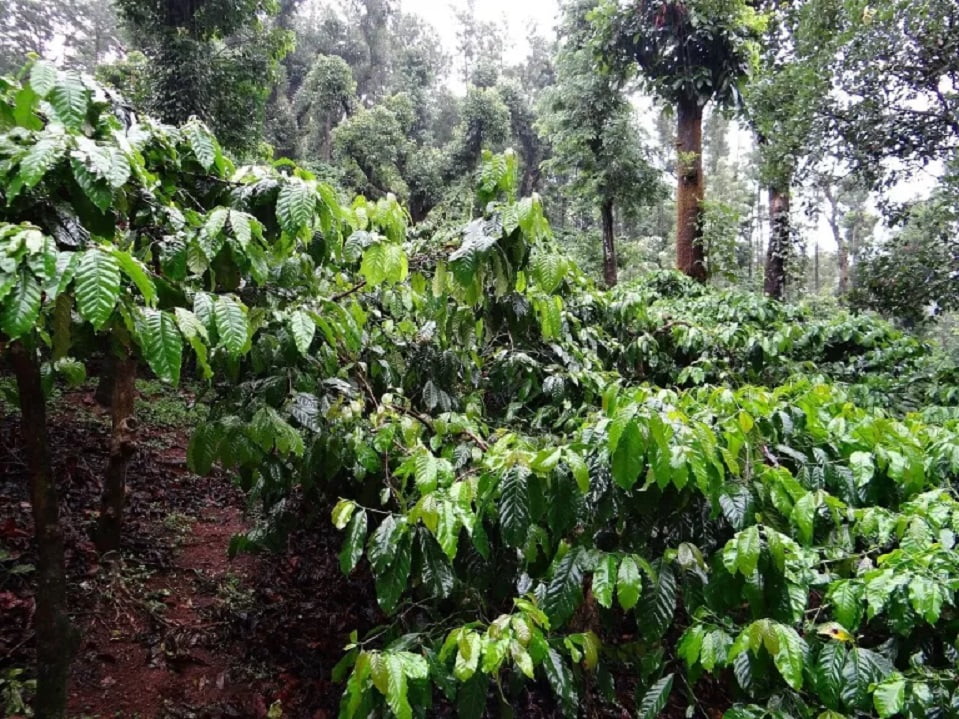What is acidity? The art of acidity in coffee
What is acidity? Does it really affect your cup of coffee experience and quality? This concept is not only limited to science but can also make the art of taste

What is the acidity of coffee?
What is acidity?
Acidity – is the sparkling sweetness that brightens your palate when sipping a cup of Specialty coffee. It is similar to the feeling when you bite into a juicy apple or orange. Terms people commonly use to describe acidity would include: lively, aromatic, crisp, bright, juicy, sparkling, and the list goes on and on. But if you grasp the general meaning of this term, we can conclude that it describes to us what a truly “bright” or “clean” cup of coffee is.
Acidity is a central component of coffee flavor. When coffee experts discuss “acidity,” they are referring to the existence of certain acids that affect the flavor of coffee. Acidity is not related to actual acid content; rather, it refers to taste
Acidity can liven up and make a delicious cup of coffee, but it can also destroy your experience. Too much acid can make a cup of coffee too acidic and cause others to ignore the rest of the flavors. With too little acid, coffee will taste bland and lifeless

pH scale in 3 levels: Acidic, neutral, alkaline
The acidity level in Specialty coffee can be influenced by many factors, such as people and other things involved.
Acids in coffee
Acidity can be reduced to two types- organic acids and chlorogenic acids.
Organic acids include citric, malic, quinic, succinic, acetic and tartaric acids. Each of these compounds offers its own flavor:
– Malic Acid – Same taste when you’re biting into a juicy green apple, peach or plum. A cup of coffee with good malic acid will provide such a delicate and fresh experience.
– Citric acid – like when you eat an orange or grapefruit. Citric acid is found in arabica seeds grown at higher altitudes. This type is commonly found in citrus fruits, which are combined with lemons, limes and grapefruit when mixed with phosphoric acid.
– Tartaric acid – is the acid that people often recognize in wine – especially red wine. It has a grape-like acidity and is easily distinguished from other types of acidity. However, it is rarer than the other types.
– Acetic acid – the same type as the acid found in vinegar, it can be pleasant at low concentrations. High concentrations of acetic acid is very irritating. Coffee with high levels of acetic acid can be caused by improper processing.

We can compare the acidity of coffee with the acidity of the fruit
Chlorogenic acid is something that exists as a whole molecule but is then broken down during roasting into quinic and caffeic. These acids are responsible for the bitter, smoky flavor in coffee. The darker the coffee is roasted, the greater the amount of this acid produced, due to the bitter taste. Therefore, this acid should not be found in high quality Specialty coffees created by Extremely Light roasting
Journey of acidity in coffee
Origin
Soil plays an important role in developing the chemical properties of coffee beans. Many studies have shown that coffee from Kenya, Ethiopia and Tanzania has more citric characteristics than Latin American coffee from Colombia or Panama.
Many plants can also affect acidity. And finally, altitude plays a huge role. Coffee grown at higher altitudes will be more acidic than coffee grown at lower altitudes. The cause may be not only the altitude but also the temperature. Cooler temperatures at higher altitudes allow the cherries to ripen more slowly. The extra time will allow more complex flavors to develop in the cherries, which are eventually deposited into the small beans that are being nurtured within.

Coffee grown at higher altitudes will be more acidic
Pre-harvest processing
Postharvest processing is intended to free the beans from their binding to the cherries and surrounding mucilage. The sweetness and acidity of a finished cup of coffee can be greatly influenced by the selection of this coffee preparation method.
The wet pre-processing process involves crushing the cherries and washing them to remove all the cherries around the seeds. Sugars have very little chance to ferment around the beans and affect their final flavor. Therefore, coffee prepared by this method often has a bright acidity.
In the case of dry pre-processed coffee (commonly known as natural coffee), the entire fruit pulp is left to dry around the beans during the drying process. The sugar ingredients (sucrose and fructose) are available for the bacteria to work on and ferment. This results in sugar from the fruit being added, penetrating the kernel. Therefore, coffee tastes sweet
Some alternative methods such as semi-wet pretreatment, anaerobic, carbonic desalination, etc. also provide an opportunity for various types of fermentation to take place. Usually, in the present era, people use barrels (which are used to ferment alcohol) to brew coffee in them. Or ferment coffee with fruits like pineapple, papaya and watermelon in an aerobic or anaerobic environment. Controlling a range of these interrelated factors allows farmers to bet on acidity and sweetness. And they can produce many different unique coffees with equally unique flavors.
Roast Coffee
43 Factory Coffee Roaster has always focused on bringing out the best in the finished coffee. The focus has always been on the originality of the coffee and how to express it clearly. Sourcing is an important task for any roaster. There are a number of factors that the roaster can control to determine the ultimate outcome of acidity in the final product. They are much simpler than you might begin to imagine.

The way you roast coffee can affect the acidity of coffee
The simplest factor is the degree of roasting. Lightly roasted coffees usually have a brighter acidity than dark roasted coffees. The reason is that with prolonged use of heat, all the organic acid molecules responsible for creating fruity, floral and other delicate flavors begin to break down and lose their influence. The natural flavor of the coffee is replaced by the smoky, bitter flavor associated with the roasting process. The acidity was completely masked under these flavors.
Another factor is the intensity of the heat used which can produce different levels of acidity in the coffee. In general, higher heat intensity will produce more acid. However, roasters will control the overall heat transfer to ensure that the beans are not completely scorched.
The roast profile is determined depending on the nature of the coffee, its origin, its processing, and its variation over time depending on the interaction with environmental factors such as temperature and humidity, warm.
Make coffee
The final, most impactful, exciting, and powerful action taken at the end of the coffee bean’s life is brewing. The reputation of a Specialty coffee cannot be complete without the right brewing method to reveal all the value that has been forged to its potential in all previous stages of growing, processing and roasting.
You can find an exquisite Burtukaana from the high skies of Ethiopia, accurately portraying the intrinsic flavor and beauty of the growing region. But if it’s just because you use unsafe water, it’s not surprising that the finished cup of coffee isn’t impressive and even worth throwing away. The subtle acidity is easy to lose when encountering poor water quality, high detergent content, or improperly aligned minerals. Therefore, mixing operation should be considered in combination with a qualified water source.

Controlling water temperature, grind size and incubation time play an important role
In addition, the acidity is also affected by a number of factors such as the size of the ground coffee beans, the temperature and the extraction time. During brewing, natural flavors including floral, fruity and more subtle flavors (all closely associated with acidity) are extracted first followed by sweetness. Extracting too little will produce a cup of sour that is too sour while over-extracting will produce a cup of bitter and acrid. While brewing, you need to find the perfect balance between the original and sweet notes. Here are some important points when brewing beer:
The finer grind size results in faster extraction due to more surface area of the coffee in contact with the hot water.
– The higher the water temperature, the faster the extraction will be due to the more chemical activity brought about by the greater amount of energy.
– Longer brewing time will result in more extraction as the contact time between hot water and coffee grounds increases, which in turn leads to more chemical activity. Coffee made with colder water (cold brew) usually produces a cup with lower acidity. However, the time required to brew coffee with cold water is longer than with hot water because the energy available for extraction is very low; logical explanation why cold annealing takes 24 to 48 hours to complete.
Increasing or decreasing these 3 elements in harmony with each other will help you find the perfect balance and release not only the best acidity but also the perfect body and sweetness in your cup of coffee.
Acidity is the most complex, controversial, difficult and problematic aspect of coffee. 43 Factory Coffee Roaster remains loyal to the love of acidity in coffee. Acidity is one of the best parts of the food that we eat and drink. It provides freshness and crunch to the fruit and creates a beautiful contrast with the full fatness.
>> If you like specialty coffee, let find out more: News
>> About homeland of coffee: Stories













